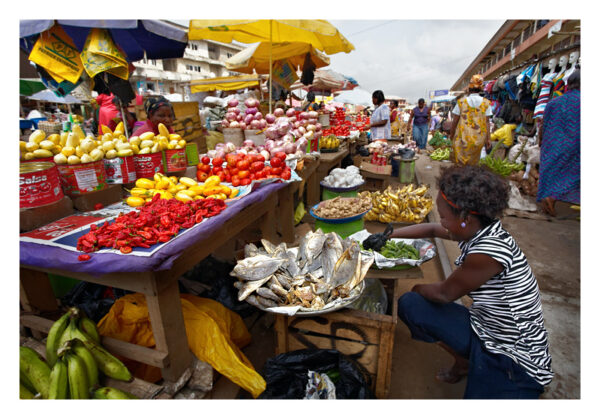PRICES of foodstuffs in the open market have gone up sharply in the last couple of months, raising serious concerns about the rising cost of living in the country.
The development is largely driven by the steep rise in petroleum products leading to the upward adjustment in transport fares across the country according to a random survey conducted by the Graphic Business in some major markets in the capital city. They include the Mallam Atta, Adabraka, CMB and Agbobloshie markets.
The survey was to gauge how the increase in transport fares had affected food prices in the last couple of weeks ahead of the formal release of inflation figures for the month of March.
The latest phenomenon is fast eroding the disposal income of both private and public sector workers whose earnings have largely remained static since January.
Food prices
Read also: Hike in fuel prices: Minority demands scrapping of 3 taxes on petroleum products
A 50kg bag of onion now sells at GH¢550 as against GH¢400 in December, while a medium-sized basketful sells at GH¢35. About eight small pieces in plastic bag sells for GH¢5 and GH¢10 depending on the sizes in all the three markets.
An olonka of pepper (green) costs GH¢10 up from GH?8 in December while red pepper sells between GH¢15 to GH¢20 in the markets surveyed.
At the Adabraka market which is notable for smoked fish, a small-sized basketful (about 10 pieces) of smoked fish now cost between GH¢120 compared to GH¢70 in December.
A delicacy and a popular type of smoked fish known as ‘Akwaabi’ (catfish) now cost between GH¢80 and GH¢100 for one medium-sized piece, up from about GH¢40.
Large-sized Koobi (salted fish) is now selling at GH¢30 as against GH¢20 in December.
A medium-sized bunch of plantain sells at GH¢25 at Mallam Atta and CMB markets as against GH¢15 in December, and GH¢30 at Agbobloshie market.
In relation to tubers, a small-sized tuber of yam is now selling GH¢7 against GH¢5 in December, and the medium-sized yam cost GH¢12 against GH¢8 in December.
A medium-sized basketful of cassava cost GH¢30 at all the markets under review as against GH¢20 and GH¢25 in December.
An olonka of the garden eggs sells at GH¢25 in the three markets as compared to GH¢18 in December last year.
The prices of grains have also gone up. An alonka of agushi or akatoa is now selling at GH¢70 as against GH¢45 in December while beans is now at GH¢50 from GH¢30.
However, the price of tomatoes, which is a seasonal crop, has reduced slightly with a carton selling at GH¢300 in all the markets compared to GH¢500 as at December.
Traders observations
Majority of the traders, largely women, who interacted with the Graphic Business during the random survey blamed the rise in food prices to the increase in fuel prices, and subsequently called for swift government intervention to help stabilise the food prices.
Once they increase petrol prices, the cost involved in transporting the goods from the farm gates to the market centres also goes up. This affects the prices of the foodstuffs. The hardship is too much, so the government should do something about it,” a plantain trader at the CMB market, Mary Tiwaa, said.
Another trader, Eunice Debrah, said, “Now you realise the cost of petrol has affected the prices of fishing inputs coupled with the cost of fuel needed to run the boat to go to sea. Then after drying, the cost of transport to the market has also gone up.”
Disposable income
A worker, Juliana Opoku, who was interviewed last Saturday about the impact of the rising prices of foodstuffs on the market, shared her ordeal saying “a single mother of four, I earn ¢1,800 per month.
I used to spend GH¢350 a week but this has increased to between GH¢550 and GH¢600 or even more”.
She said the development has affected her disposable income and expressed the hope that the latest measures announced by the Finance Minister will change the situation for the better.
Source: Graphic
